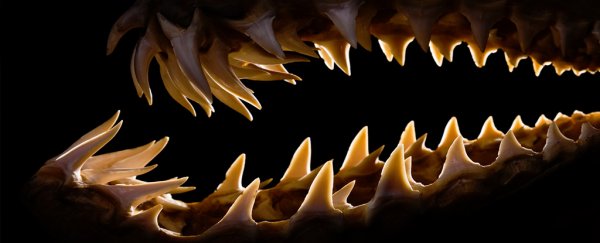Scientists have identified a new rule of growth that shapes the form and development of pointy or sharp biological structures in animals and plants, such as teeth, horns, claws, beaks, and thorns.
Describing the newly found pattern as a previously unknown law of nature, the researchers call their discovery the "power cascade" – a mathematical power law found throughout nature, determining the growth and evolution of a family of shapes called power cones.
"The diversity of animals, and even plants, that follow this rule is staggering," says evolutionary biologist Alistair Evans from Monash University in Australia.
"We were quite shocked that we found it almost everywhere we looked across the kingdoms of life – in living animals, and those extinct for millions of years."

The focus of much of Evans' work is the morphological evolution and functioning of their body parts. Sometimes that focus is trained on the remarkable features of individual creatures; at other times, a similar pattern can be discerned among many organisms.
Hundreds of years ago, another scientist had the same preoccupations. Sir Christopher Wren, the famed English architect and polymath, proposed the shapes of snail shells were determined by the mathematics of logarithmic spirals, where one side of a structure grows faster than another.
Centuries later, Evans had a similar realization, but struck upon a new rule of growth beyond Wren's thinking – based upon a new shape, the power cone, which is generated when the radial power growth rate is unequal to the length power growth rate.
The power cascade generates a family of shapes that we call ‘power cones’, which vary from a straight-sided cone to a blunt tip. pic.twitter.com/cVYdjtcQWL
— Alistair Evans (@DrTeethAl) March 30, 2021
"For many years I have searched for a pattern in how teeth grow," Evans explains in The Conversation. "By looking at hundreds of teeth and measuring how they get wider as they get longer, my team and I identified a simple mathematical formula that underpins tooth shape."
This formula, the power cascade, isn't only observed in the shape of natural teeth, horns, fangs, and prickles; the power cascade model can also simulate the growth of these structures, the researchers say.

The new discovery means we may be able to gauge the age of animals by simply knowing the shape of their teeth, as reconstructions of the shape could indicate the necessary growing time.
Another application could be anticipating future evolutionary processes, the team thinks.
"These shapes may be considered the default family of shapes for pointed structures, meaning they are more likely to independently evolve multiple times and will be a likely source of homoplasy in evolution," the researchers write in their study.
"Due to the huge breadth of structures and taxa in which this pattern is found, it appears that the power cascade is a fundamental pattern of growth in myriad organisms."
The findings are reported in BMC Biology.
